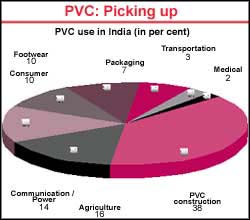The Indian reality
The Indian reality

Indians are yet to realise the gravity of dioxin contamination and its related health effects. The government has not conducted any study to find out the level of dioxin exposure in the population. The laid back attitude of the government is reflected by the fact that nowhere in the country dioxins are monitored. But absence of evidence does not indicate evidence of absence. The us epa clearly states that "the lack of clear indication of diseases in the general population attributable to dioxin-like compounds should not be considered strong evidence for no effects of exposure to dioxins. Rather a lack of clear indication of diseases may be result of the inability of our current data and scientific tools to directly detect effects at these levels of exposure.'
Environmentalists agree that dioxins are being produced all over the country but due to lack of any scientific studies, no one knows the magnitude of the problem. "Neither the existence of dioxins nor the sources of dioxins are currently officially acknowledged by the government agencies. There exists no data on dioxin levels in the country,' reveals Nityanand Jayaraman, Asia Toxic Campaigner.
A major source of dioxins in India is poly vinyl chloride ( pvc ), both during its production and disposal. Burning of unsegregated waste containing pvc is a common practice in India. What is frightening is the fact that plastic percentage is increasing in our waste and pvc is extensively used in the country (see graph: PVC: picking up). The Central Pollution Control Board ( cpcb ) estimates that the per capita consumption of plastic has gone up from 1.7 kg in 1997 to 4 kg in 2000. Other estimates point out that in the next two years, pvc capacity in India is expected to increase by around 1,30,000 tonnes . At present, Indian plastic industry produces more than 70,000 tonnes of pvc a month. At current rates, pvc supply will fall short of demand, which is expected to rise at a compound annual growth rate ( cgar ) of 13 per cent. The shortage will mean importing more pvc , generating more pvc waste, burning more pvc , and finally producing more dioxins.
With unsegregated plastic waste growing, burning is the normal practice for disposal. Says Bharati Chaturvedi, director of New-Delhi based non-governmental organisation ( ngo) , Chintan Environmental Research and Action Group, "Rather than having large







